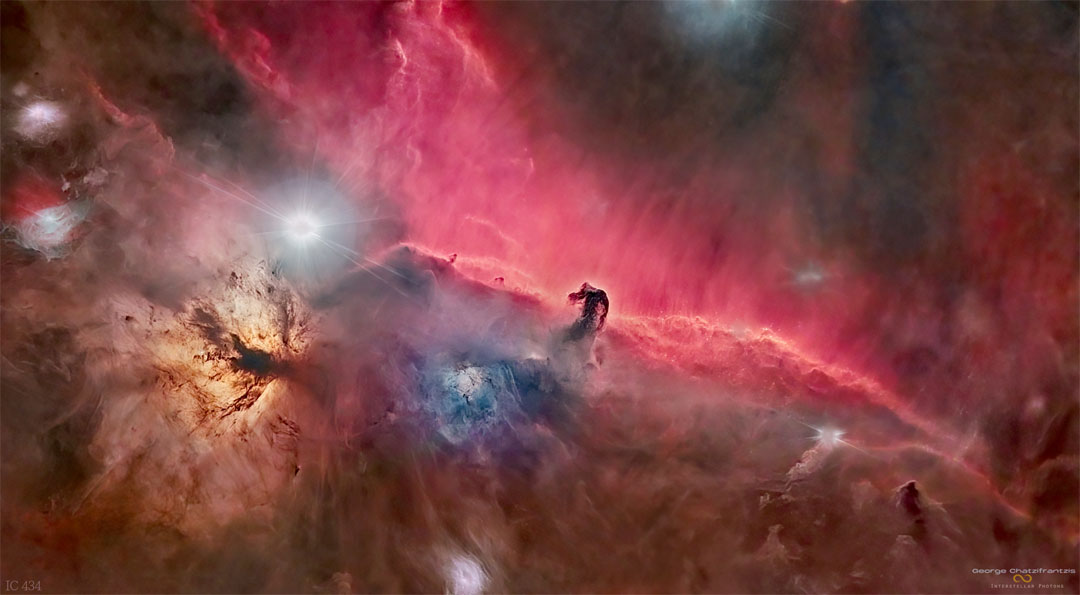2022年8月29日
The Horsehead Nebula Region without Stars
Image Credit & Copyright: George Chatzifrantzis
Explanation: The famous Horsehead Nebula in Orion is not alone. A deep exposure shows that the dark familiar shaped indentation, visible just right of center, is part of a vast complex of absorbing dust and glowing gas. The featured spectacular picture details an intricate tapestry of gaseous wisps and dust-laden filaments that were created and sculpted over eons by stellar winds and ancient supernovas. The Flame Nebula is visible in orange just to the Horsehead’s left. To highlight the dust and gas, most of the stars have been digitally removed, although a notable exception is Alnitak, just above the Flame Nebula, which is the rightmost star in Orion’s famous belt of three aligned stars. The Horsehead Nebula lies 1,500 light years distant towards the constellation of Orion.
NASA Coverage: Artemis I Mission to the Moon
Teachers & Students: Ideas for utilizing APOD in the classroom
Tomorrow’s picture: Jupiter revealed
移除恒星后的马头星云
影像提供与版权: George Chatzifrantzis
说明: 猎户座著名的马头星云并不孤单。长曝光影像显示,可见诸影像中右侧的可见的熟悉暗斑,是不透光尘埃和明亮气体聚成的庞大复合体之一部分。这幅壮观的主题影像,细致的呈现了亘古以来,恒星风和远古超新星所创造和雕朔出的丝状云气和富含尘埃细丝所织就的复杂挂毯。火焰星云则是马头左侧的橙色天体。为了突显尘埃及气体,视野里大部分的恒星已用数位技术加以移除,其中的明显例外是火焰星云上方的参宿一(Alnitak),它是猎户座著名腰带三星中最右边的那颗。马头星云位在猎户座方向约1,500光年远之处。
NASA报道: 阿尔忒弥斯1号登月任务/p>
教师和学生: 在课堂上使用APOD的想法
明日的图片: Jupiter revealed







